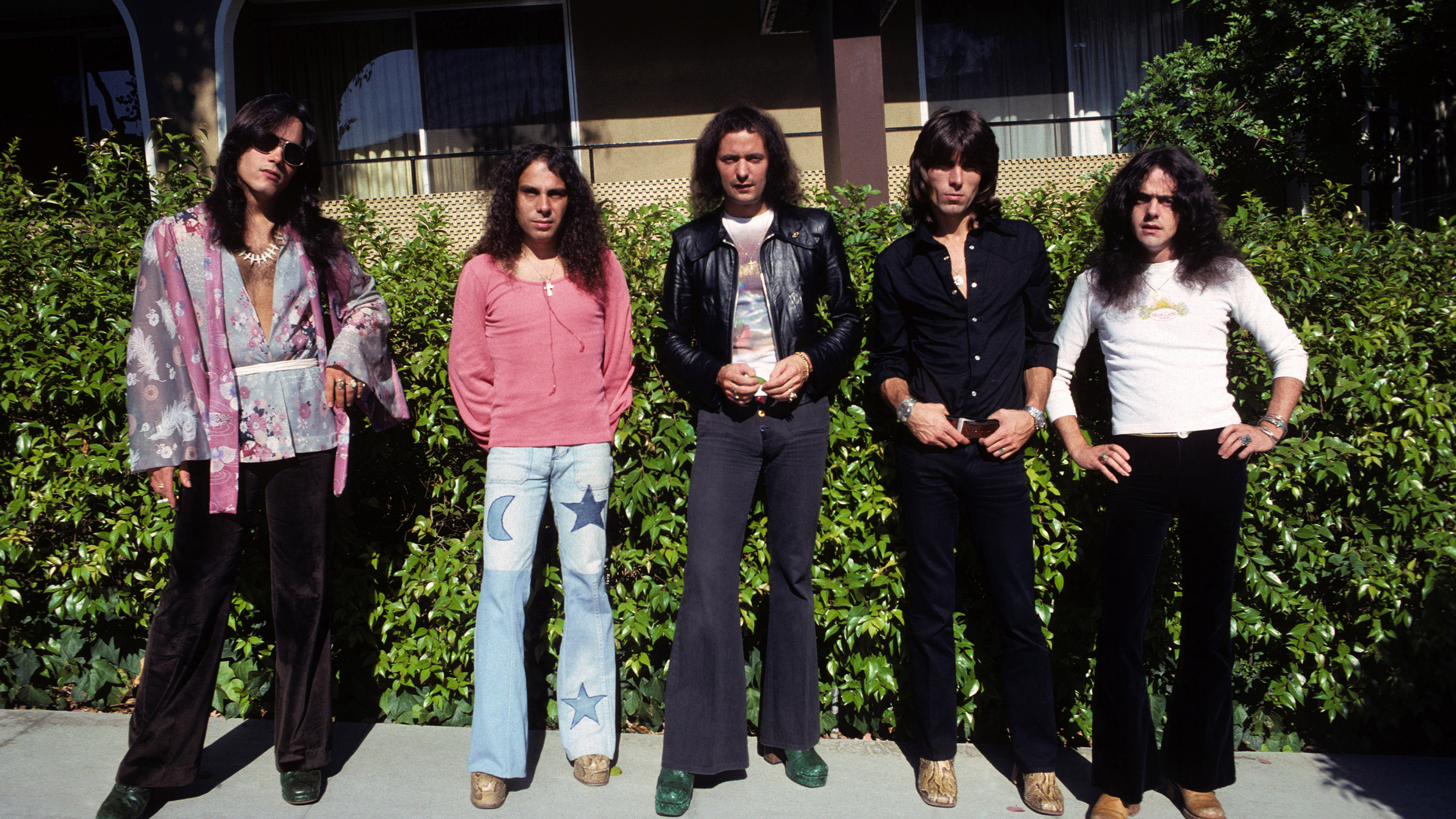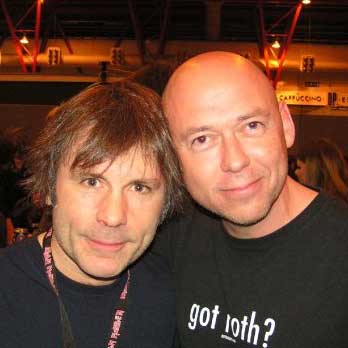“Ritchie and I wrote some great songs, some really wonderful things”: How Ritchie Blackmore and Ronnie James Dio combined to create an epic style of heavy music - ‘castle rock’!
The two rock legends hit a peak with Rainbow's Rising

Ritchie Blackmore was already a superstar when he left Deep Purple in 1975 to form a new band named Rainbow.
But for the singer that Blackmore chose to front this new outfit, this was his first big break on the way to becoming a legend in his own right.
The first Rainbow album was originally conceived as a solo project while Blackmore was still Deep Purple’s guitarist. But the funky vibe in Purple’s two albums from 1974, Burn and Stormbringer, was not to Blackmore’s taste.
Voicing his dissatisfaction by muttering darkly about “shoeshine music”, Blackmore looked beyond Purple in pursuing a new direction.
In American singer Ronnie James Dio, he found the perfect foil.
When Dio’s band Elf supported Purple in 1974, Blackmore had been blown away by the singer’s power and range. As a result, Blackmore enlisted Dio and the other members of Elf – minus, of course, guitarist Steve Edwards – to make the album Ritchie Blackmore’s Rainbow.
Released in August 1975, two months after Blackmore officially quit Deep Purple, the album had mighty riffs in its mystical heavy rock songs Man On The Silver Mountain and Sixteenth Century Greensleeves, and beauty in The Temple Of The King and Catch The Rainbow.
Want all the hottest music and gear news, reviews, deals, features and more, direct to your inbox? Sign up here.
With Dio’s rich voice and poetic fantasy lyrics perfectly attuned to Blackmore’s baroque sensibilities, this album was the birth of what was later christened, half-jokingly, ‘castle rock’.
And this new and heroic form of rock was taken to a whole new level with Rainbow’s second album, Rising.
Blackmore was ruthless in his pursuit of perfection, retaining only Dio from the original Rainbow line-up as he brought in bassist Jimmy Bain, keyboard player Tony Carey and drummer Cozy Powell, the latter formerly of The Jeff Beck Group.
Rising was recorded in just 10 days at Musicland studio in Munich. The result was a magnum opus equal to the classics that Blackmore had made with Deep Purple.
The album’s dramatic tone is set in the opening track Tarot Woman, with its portentous synthesizer intro, heavy crunch, and Dio in full flight.
Among the simpler songs, Starstruck is elevated by Blackmore’s mastery in riff and solo.
And in the two lengthy tracks that ate up the second side of the album, in its original vinyl format, is the early Rainbow in all its neo-classical, heavy rocking glory.
Stargazer is their answer to Led Zeppelin’s Kashmir, a desert-themed epic with Powell creating thunder in the intro, Blackmore’s monolithic riff swelled by the Munich Philharmonic Orchestra, and Dio’s voice soaring above the tumult.
The guitar solo in Stargazer is arguably the greatest that Blackmore ever recorded.
The album’s finale, A Light In The Black, has the explosive power that led Sounds to describe the album as “thermo-nuclear rock ’n’ roll”.
The grandeur of this album was perfectly illustrated by its cover art: a giant fist emerging from a raging sea to grasp a rainbow, a lone warrior figure watching from a cliff’s edge, a gothic castle visible in half-light.
Blackmore had commissioned the painting from artist Ken Kelly, who said of the guitarist’s vision. “He knew exactly what he wanted.”
Sadly, this incarnation of Rainbow was not to last.
Dio was gone by 1978, as Blackmore remodelled Rainbow as a more mainstream rock act. The singer would subsequently replace Ozzy Osbourne in Black Sabbath.
Replacing Dio in Rainbow was the gritty-voiced Graham Bonnet, who sang on the 1979 album Down To Earth and its hit single Since You Been Gone, Rainbow’s most famous song.
After Bonnet’s exit, a younger American singer, Joe Lynn Turner, voiced another classic jukebox hit I Surrender.
But Ronnie James Dio was the definitive voice of Rainbow – and Rising was the band’s zenith.
As Dio would say: “Ritchie and I wrote some great songs, some really wonderful things.”

Paul Elliott has worked for leading music titles since 1985, including Sounds, Kerrang!, MOJO and Q. He is the author of several books including the first biography of Guns N’ Roses and the autobiography of bodyguard-to-the-stars Danny Francis. He has written liner notes for classic album reissues by artists such as Def Leppard, Thin Lizzy and Kiss. He lives in Bath - of which David Coverdale recently said: “How very Roman of you!”
You must confirm your public display name before commenting
Please logout and then login again, you will then be prompted to enter your display name.



